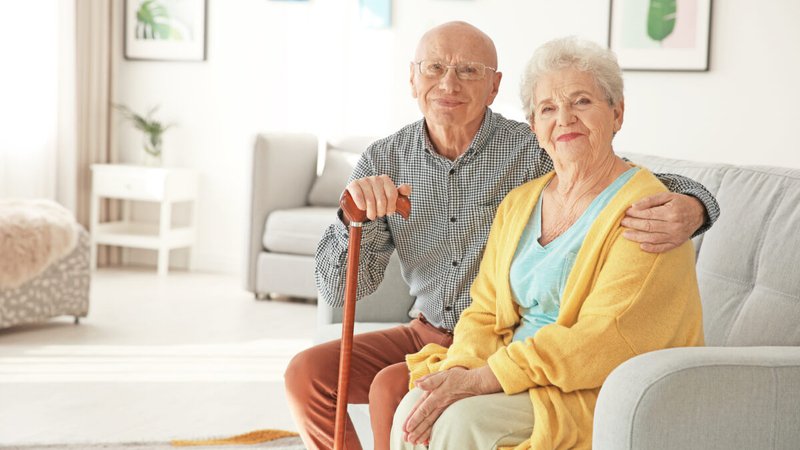Aging at home allows you or your loved one to remain in a place that feels safe and comfortable. It helps preserve familiar routines, promotes independence, and supports emotional well-being. But is aging at home the right choice for you or your loved one? The benefits of aging in place include staying connected with family, maintaining independence, and managing costs effectively. Here are key reasons why home may be the best place for aging with dignity and security.
Key Takeaways
- Aging at home promotes independence, familiar surroundings, and emotional security, reducing stress and improving mental well-being.
- Home modifications like grab bars, ramps, nightlights, and medical alert systems improve senior safety and mobility. Financial aid may be available.
- In-home care services include non-medical care (help with daily tasks) and home health care (medical services by professionals). Options include private caregivers or agency-based care.
- Cost of home care varies; non-medical care averages $25-$35/hr, while medical care is $30-$40/hr. Financial assistance is available through Medicare, Medicaid, VA benefits, and nonprofits.
- Technology like medical alerts, smart home devices, and home monitoring systems improves safety and independence.
- Caregivers must manage stress, seek respite care, and balance work responsibilities while ensuring self-care.
- Community resources such as senior centers, meal delivery, and social programs help prevent isolation and support aging in place.

Key Benefits of Aging at Home
Aging at home means staying in your own space as you grow older, offering numerous advantages like maintaining your independence and remaining in familiar surroundings.
Maintaining Independence and Familiar Surroundings
Aging at home allows you to have control over your daily life. You can set your own routines, make personal choices, and enjoy the comfort of your own space. Moving to assisted living often means adjusting to new rules, unfamiliar faces, and a different lifestyle. At home, you can stay connected with neighbors, visit your favorite places, and keep the personal belongings that bring you joy.
Emotional and Psychological Benefits for Seniors
Aging at home supports your emotional well-being. Many seniors feel more at ease in their own space, where they can enjoy hobbies, interact with pets, and have their own personal space. Assisted living may bring feelings of isolation or loss of control, especially when routines change.
Aging at Home vs. Assisted Living
When considering aging at home versus assisted living, factors like cost and personal comfort are important. While home care services can be expensive, combining professional care with family support may make it more affordable. Assisted living facilities provide round-the-clock support but often follow structured routines and offer less privacy.
Safety is another key consideration. You may need to modify your home to prevent falls and improve mobility. Assisted living facilities already have built-in safety measures, but they can't match the personal touch of your own home.
The best choice depends on individual needs, financial resources, and health conditions. For many, aging at home offers greater comfort, freedom, and well-being. For help making a decision, read Evaluating Home Care as the Best Option for Aging Parents. To learn more about planning for aging in place, visit the National Institute on Aging’s Guide on Aging in Place.
Home Modifications Improve Senior Safety
Simple home adjustments can greatly enhance safety and make movement easier while aging at home. For instance, installing grab bars in bathrooms provides extra support, reducing the risk of falls. Ramps and stair lifts also make it easier to move between floors without added strain. Additionally, widening doorways can accommodate mobility aids if needed.
Lighting plays a major role in preventing accidents. Nightlights in hallways and bathrooms help reduce trips in the dark, while motion-sensor lights automatically turn on when needed. Non-slip flooring in bathrooms and kitchens minimizes fall hazards, and removing loose rugs eliminates potential tripping risks.
Other helpful modifications include walk-in tubs for easier bathing, raised toilet seats for better accessibility, and handrails alongside stairways for extra balance support.
Moreover, technology can further improve safety. Medical alert systems provide instant access to help with the push of a button. Smart home devices allow you to control lights, locks, and thermostats using voice commands, reducing the need for physical effort.
You may also be eligible for financial assistance to cover some of these home upgrades. Medicaid programs can help with home modifications, the Department of Veterans Affairs offers funding for eligible veterans, and nonprofit organizations such as your local Area Agency on Aging may assist with home improvements.
By making these changes, you can maintain your independence while aging at home, ensuring a safe and familiar environment.
Types of In-Home Care Services for Aging at Home
In-home senior services offer varying levels of support depending on your needs. Home Care and home health care serve different purposes. Home care involves assistance with daily tasks such as bathing, dressing, and meal preparation and does not require medical training. On the other hand, home health care includes medical services like nursing, therapy, and other professional care from licensed specialists.
If you need help with household tasks, personal care, or companionship, non-medical home care is a great option. This service is ideal for seniors who need daily assistance but do not require medical attention.
For seniors who need medical support, home health care provides services like medication management, wound care, and physical therapy. Doctors often prescribe this care after surgery or for managing chronic conditions.
You can hire caregivers privately or through an agency. Private caregivers tend to be more affordable, but families are responsible for hiring, payroll, and managing the caregiver. Agency-based care offers the advantage of managed staffing and training, but it usually comes at a higher cost.
When selecting the right care option for aging at home, consider your specific support needs and available budget. It’s also helpful to seek advice from healthcare providers and local senior services to make an informed decision.
Cost of In-Home Senior Care
The cost of aging at home and in-home senior care depends on the level of care needed and the caregiver's location. On average, basic home care services range from $25 to $35 per hour, while medical home health care costs between $30 and $40 per hour. Full-time care can even exceed $200,000 per year.
Medicare can help with skilled home health care prescribed by a doctor, such as nursing care and therapy. However, routine personal care like bathing or meal preparation is generally not covered under standard Medicare. That said, some Medicare Advantage plans offer additional benefits that may include these services.
Medicaid provides long-term care services for eligible low-income seniors, which may help with in-home care. Veterans Affairs (VA) benefits also offer support for qualifying veterans needing home care services. In some states, seniors can even hire family members as caregivers, further improving affordability.
In addition to government programs, several nonprofit organizations offer financial assistance for home care services. Many states also provide grants or low-interest loans for home modifications. Furthermore, long-term care insurance can cover in-home care, although policies need to be purchased before care is needed.
Researching these financial assistance options early can help ease the cost of aging at home, ensuring that you can receive the support you need while staying in a comfortable, familiar environment.
Technologies that Assist Seniors' Independence at Home
Technology can greatly enhance safety and make daily tasks easier, especially for those aging at home. Smart home devices, such as voice-controlled assistants, automated lighting, and smart door locks, help reduce fall risks and improve accessibility. These devices offer a simple way to control your home environment and make it more manageable without physical effort.
Wearable medical alerts, like bracelets or pendants, provide immediate access to emergency responders at the press of a button. Some models are even designed to detect falls automatically, ensuring that you get help when you need it most.
Additionally, remote home monitoring systems with sensors can track your movement, medication routines, and any unusual activity. This helps caregivers stay informed and provide timely support, giving you and your loved ones peace of mind.
By incorporating these technologies into your daily routine, you can maintain your independence while staying connected with your caregivers, ensuring that you can safely age at home.
Caregiver Support for Managing Aging at Home Parents
Providing care for an aging parent can be both fulfilling and exhausting, and it’s important to recognize when you need support. If you’re feeling overwhelmed, it’s crucial to manage stress and avoid burnout. Signs of burnout, such as exhaustion and frustration, are common. Taking breaks, asking for help, and practicing self-care can prevent stress from becoming unmanageable.
Respite care services can provide much-needed relief. These services give you the opportunity to recharge, with options like in-home assistance, adult day programs, and short-term stays at a facility. By utilizing respite care, you can ensure you’re able to continue providing care while maintaining your own well-being.
Finding a work-life balance can be especially challenging while caring for a loved one. It’s worth discussing flexible work options with your employer to ease the burden. Additionally, programs like the Family and Medical Leave Act (FMLA) can provide unpaid leave for family care, giving you the time you need without the added worry of work commitments.
Taking these steps allows you to better manage the responsibilities of aging at home and avoid burnout, ensuring you can provide care while also taking care of yourself.
Aging at home is achievable with thoughtful planning, support, and the right resources. By carefully considering your loved one's needs and making necessary adjustments to the home, you can create a safe and comfortable environment that promotes independence. Additionally, accessing local senior services and financial assistance programs can help alleviate the costs of in-home care and provide valuable support. With the right combination of family, community resources, and technology, aging at home can offer seniors the opportunity to live with dignity, security, and peace of mind.
Start Your Journey to Aging at Home
With careful planning, the right support, and access to essential resources, staying at home as you age is entirely achievable. Reach out to Area Agency on Aging of Western Arkansas to discover how you can maintain independence and quality of life in your own home.


